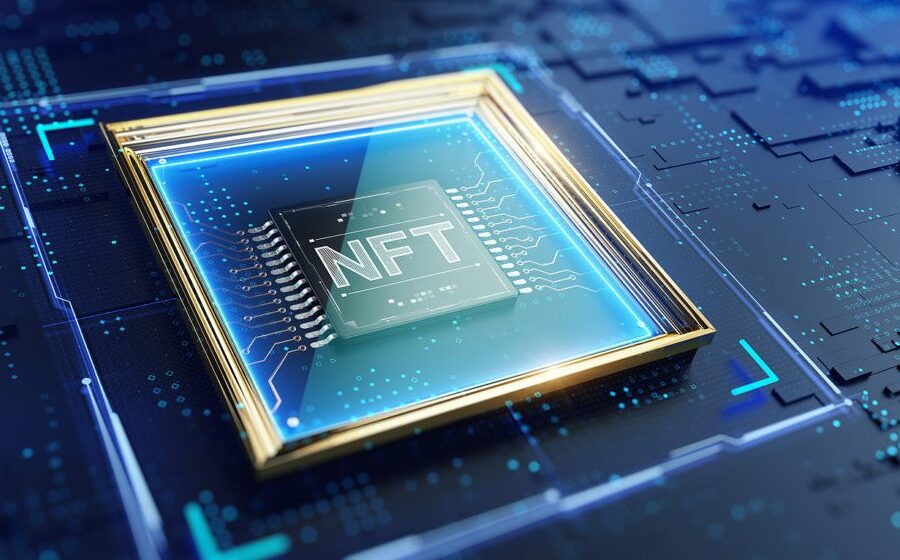KMPG Canada just bought Woman #2681, a World of Women NFT for 25 ETH.
Translation: A major global consulting firm just purchased a piece of digital art for about AU$10,000 using ether, the cryptocurrency of the Ethereum blockchain.
NFTs are very much a thing right now. But what are they, how do they work and what implications do they have for community, creativity and technology?
What are NFTs?
NFT stands for non-fungible token. Still confused? Non-fungible basically means it’s unique and non-interchangeable. Think of it as a one-of-a-kind, autographed trading card.
Wikipedia’s definition of an NFT is a “non-interchangeable unit of data stored on a blockchain, a form of digital ledger, that can be sold and traded”. NFTs can be associated with any digital file, including images, videos and even video game assets.
This sets them apart from cryptocurrencies because unlike, say, bitcoin, each NFT is uniquely identifiable.
To draw an analogy to the physical world, it’s similar to the difference between money and an original artwork. And it’s this feature of NFTs that has many people excited.
New-Age Art Collections
Singapore-based Natx Wang is a social media expert and community manager across a variety of projects in the NFT space.
“NFTs are made to show proof of ownership over something that doesn’t have a fixed value,” says Natx. “The value is determined by the people who take ownership in it.”
So why does this matter?
Well, NFTs solve a long-standing problem created by digitisation where there’s no way to distinguish between the “original” and a copy. For example, there’s no actual difference between the photo I took of my cat on my phone and the same photo I sent to your phone.
This has been an issue for the art world since the popularisation of photography thanks to industrialisation. As far back as the 1930s, German philosopher Walter Benjamin was lamenting the devaluing of art thanks to “mechanical reproduction”.
Similarly, American art critic Arthur Danto argued that the camera’s ability to perfectly reproduce the world inevitably led to the “end of art”. The project of art, he argued, changed from trying to copy the world perfectly through painting to the postmodernist questioning of what is art anyway?
While NFTs don’t answer this question, they make it possible for anyone to buy and sell the closest approximation to the ‘original’ of a digital artwork.
This happened last year when the “original copy” of the Disaster Girl meme was sold as an NFT to 3F Music in Dubai for AU$643,000. Which is why big consulting and investment firms like KMPG are describing NFTs as a “rapidly growing asset class”.
More than half a million dollars is a heck of a lot of cash to spend on a meme, but some buyers are paying millions. Twitter co-founder and CEO Jack Dorsey sold his first tweet for almost US$3 million, while digital artist Beeple’s artwork fetched close to US$70 million.
The term ‘original copy’ speaks volumes about the (still) philosophically complicated nature of originality and ownership, even in an age of NFTs, which is why screenshotting NFTs has also become a meme.
Play to Earn
A less philosophically muddy use of NFTs for creative purposes is in gaming, where existing revenue models are being turned on their heads.
We’ve all played a free-to-play game. The ones you can play until you’re hooked then asked to pay to keep going or wait an excruciating amount of time to continue for free.
“Traditional games only make money for the developers, while the players waste their time and money trying to win for ‘bragging rights’,” says Natx.
Now, the emerging trend is play-to-earn games, where players earn in-game assets in the form of NFTs or crypto.
“I got into the NFT space because of games,” says Natx.
“I WAS IMPRESSED AT HOW THEY WERE ABLE TO ‘GIVE BACK’ TO THE PLAYERS VIA TOKENS. PLAY-TO-EARN GAMES ACTUALLY TRANSFORMED THE WHOLE IDENTITY OF GAMES AND ECONOMY.”
Play to earn games usually require an initial investment. The keyword here being ‘investment’. Unlike games that you simply buy or pay to play purely for entertainment or bragging rights, play-to-earn games could lead to a return on your initial investment.
So now parents can’t tell their kids that video games are a waste of time, says Natx.
“NFT games now come with a well thought out plan and economy that helps every player involved in the economy ‘win together’,” says Natx. “All these are presented in their white paper that we can all read and research on before deciding to invest in the brand.”
In this way, play-to-earn games are more like investing in an ASX company or buying a piece of art.
While NFTs may be transforming digital art and the games industry, we’re just scratching the surface of this emerging marketplace.
And it does make one wonder – what would Walter Benjamin or Arthur Danto think of all this?



